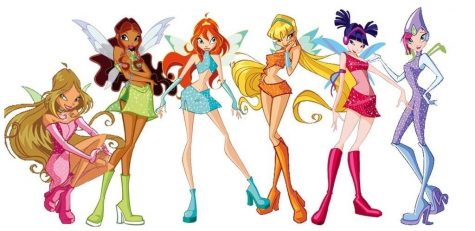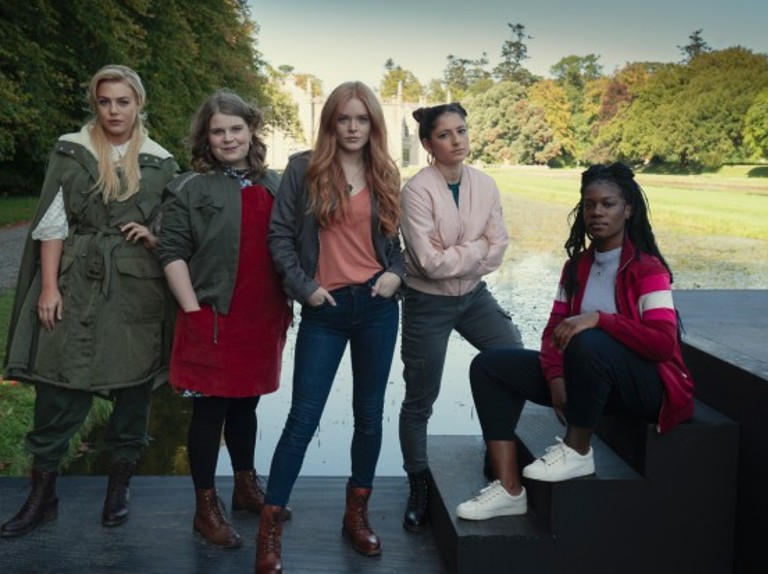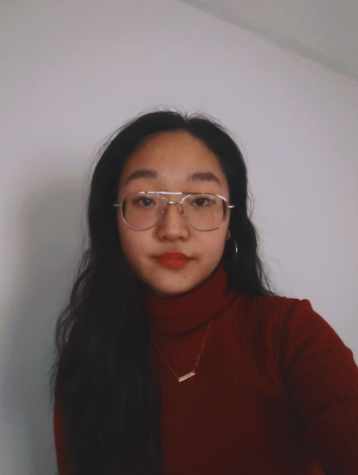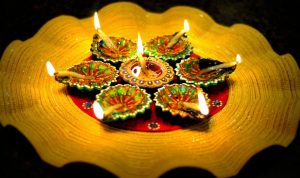Netflix Flops Again: How Winx Saga Couldn’t Take Flight
February 26, 2021
Even with the pandemic, the infamous red logoed streaming service couldn’t be stopped from spewing new releases one after the other. But along with these countless hopefuls came many disappointments.
I’ve expressed my unhappiness with Netflix before, and the streaming giant has done it again. In the form of a dark and depressing fairy realm, wings (or lack thereof, more on this later), and a fiery “Chosen One” main character, this time. Fate: Winx Saga flapped its appeal-to-young-adult/both-Gen-Z-and-Millennial-audience wings, hoping to fly as an individualistic remake of a classic. Then, it fell flat most definitely and immediately.

The original, Winx Club, is an Italian animated show (2004-) about a group of young fairies with special powers. It was a hit in the early 2000s and was a significant part of Gen Zers/Millennials’ childhoods. The group, Winx Club, consisted of Bloom (the leader), Stella, Musa, Tecna, Flora, Layla/Aisha, and later Roxy, and it was a diverse one. Each of them was also inspired by real-life celebrities appearance-wise. Flora was a Latina, Musa was an East Asian, and Layla/Aisha was black. For little girls to see characters who looked like them in their favorite show was a big deal, especially when minorities were always underrepresented. Tecna was a fairy of technology who was always experimenting and putting her vast knowledge of science to use. The recent adaptation, Fate: Winx Saga, was released lacking these key details.
Musa, who was my favorite character from the show, is played by Elisha Applebaum, a white-passing actress. She is ¼ Singaporean, according to Screenrant, but it is still not okay that an East Asian actress wasn’t chosen to portray her. Musa’s home and background, heavily influenced by the Chinese culture, were a big part of her identity, and Lucy Liu, the celebrity she was based on, is 100% ethnically Chinese. Musa’s original power was also rewritten as a different power: being an “empath” who feels others’ emotions. I would’ve loved to see her original music power, manipulating sound waves and all, on screen. There is also a character named “Terra,” played by a white, non-Latina actress, Eliot Salt. Though she isn’t Flora, Terra has the same nature/plant powers as her. It almost seemed to me that Terra was supposed to be Flora but the makers of the show included Flora as her cousin (only mentioned, no appearances) instead as a failed attempt to redeem things. Terra was plus-sized and was used as the clichéd trope of making the “fat” character the butt of jokes based on her size instead of having other possibly notable qualities to define her as a character. Tecna is completely written out and, in doing so, the filmmakers have erased all the value of seeing a woman in the STEM field and excelling at it that would have encouraged young girls to do the same.
Other changes still only resulted in let-downs. The original animated version fully embodied being “girly” and so all the outfits were bright and sparkly. The adaptation decided to take a darker route and portrayed the fictional world as more bleak and grim. Maybe to try to appeal to older audiences? Which could have been fine if it ended up like Chilling Adventures of Sabrina (2018-2020), but it ended up resembling Riverdale (2017-). Fate tried to push a “feminist” agenda and failed miserably at depicting true feminism. The female characters were just downright misandristic. The fairies also apparently “lost” their ability to transform, so the glittery wings that characterized the original show were nowhere to see. The show still could have been dark even with a girly, bright atmosphere. Euphoria (2019) is proof of that being possible. In fact, I think retaining that bubbly aesthetic would have enhanced darker elements that the writers wanted to add in and the original watchers of the animated show, who are now well into their twenties, would have found it nostalgic. There is also a new set of antagonists, called the Burned Ones, that didn’t exist in the animated show. I think this was also to fit the dark aspect of it all but the Trix (three witches who were the Winx Club’s main antagonists in the first season) erasure did not sit right with me. To make matters worse, Bloom is seen wearing red in every one of her outfits instead of the turquoise blue that her animated version wore. It’s a lousy choice, if you ask me, to dress the character with fire powers in red all the time. But it’s not just Bloom. All the characters aren’t dressed like the 16-17 year olds that they were supposed to be but like much older women who raided a Marshalls. Or a Macy’s at best. Stella wears a glitzy sweater top with a chunky necklace and, coming from a teenager myself, realistically, no one my age would be caught dead wearing that. This could’ve been remedied by a simple glimpse into Tik Tok or Pinterest to get a much better sense of the type of clothes my peers wear.
All in all, Fate: Winx Saga felt like watching a fan-made live-action. Not quite the original, very mediocre, and overall like a cheap version you’ve ordered from Wish. Except that if Winx Club fans did indeed get to have a hand in making the new adaptation, they would have stayed faithful to the original material and would’ve produced a finer version than Netflix’s. In this day and age of being in 2021, whitewashing should’ve stopped being a problem a long time ago. The first season released so far has only six episodes, and I wish I wasn’t saying this but even six episodes were too long to have this mess drag on.

















































































































































